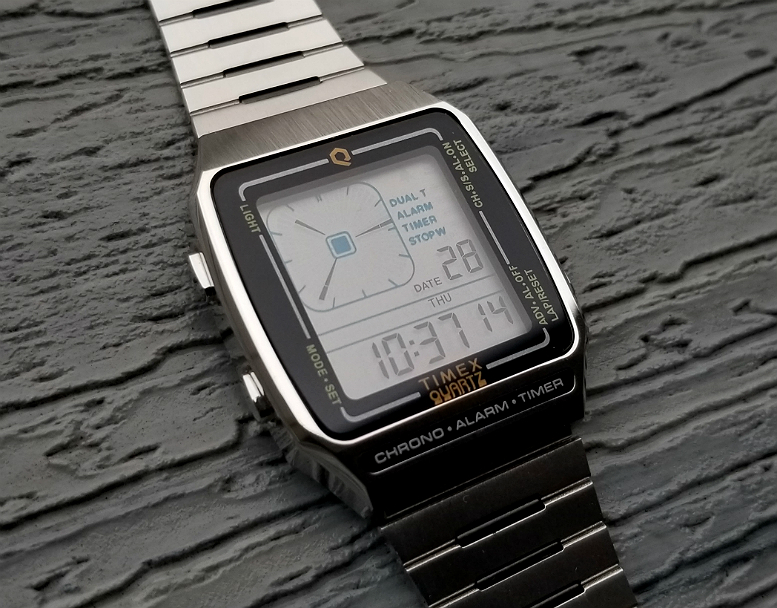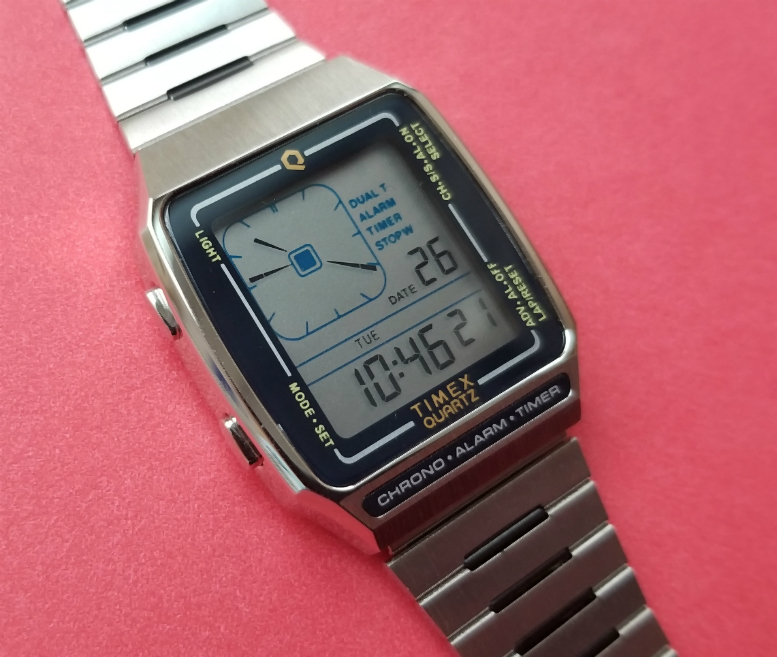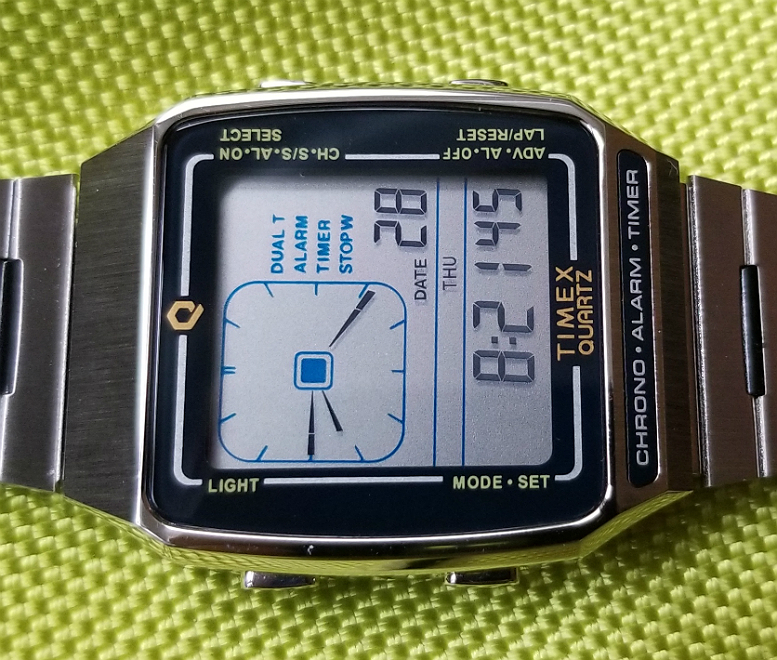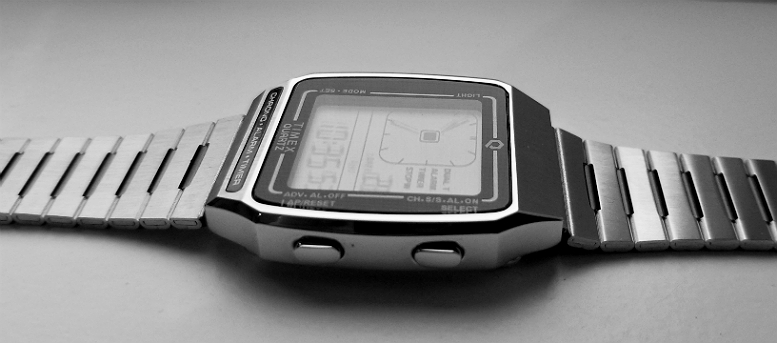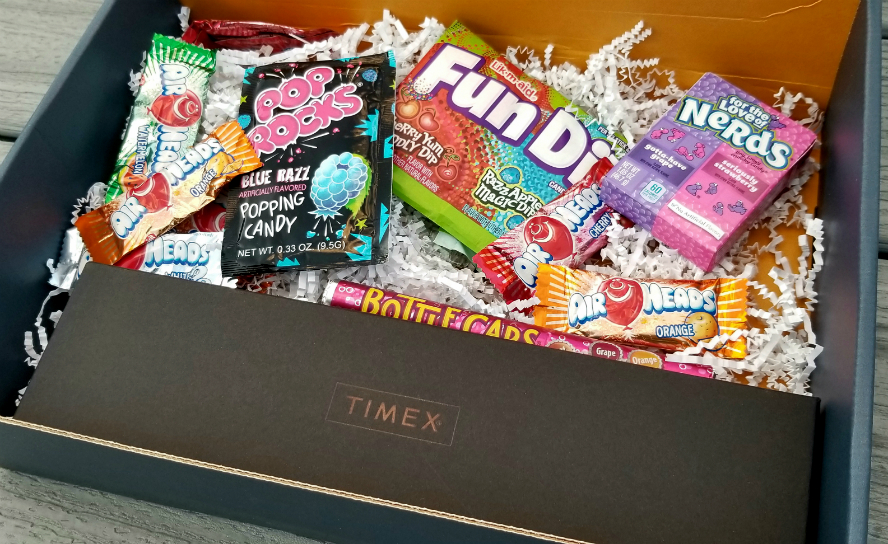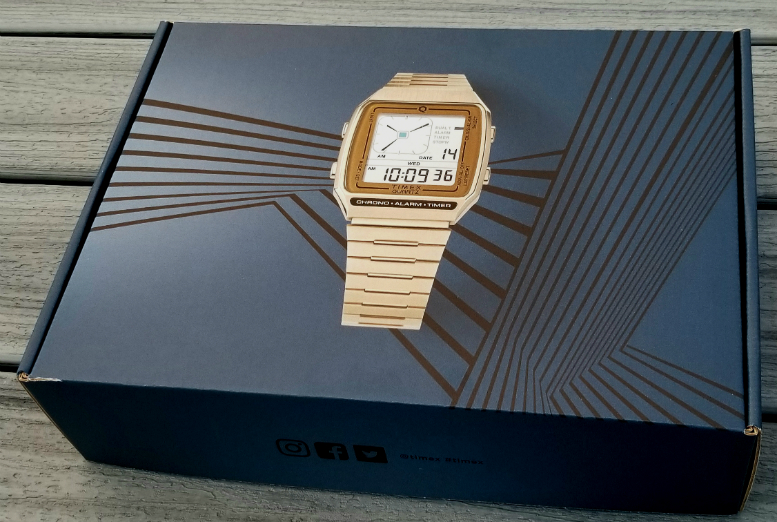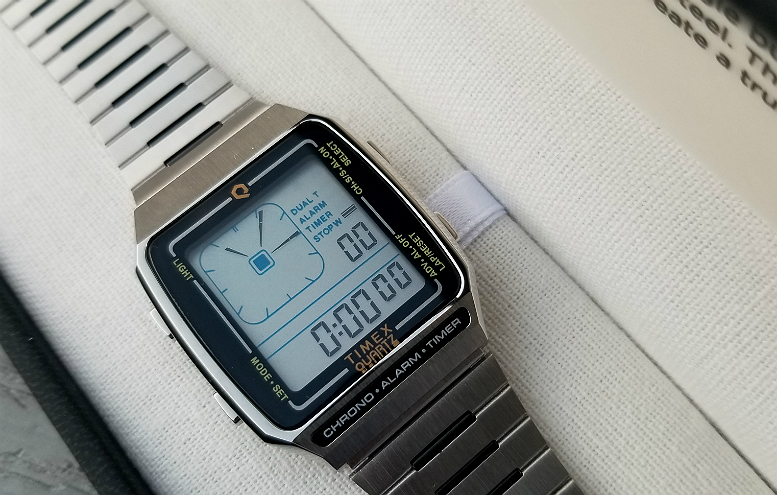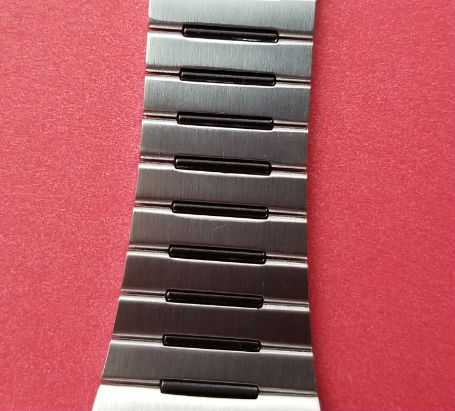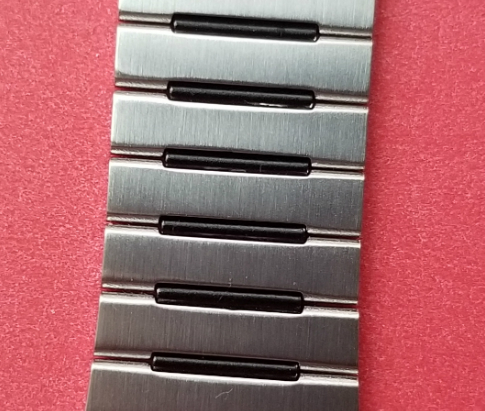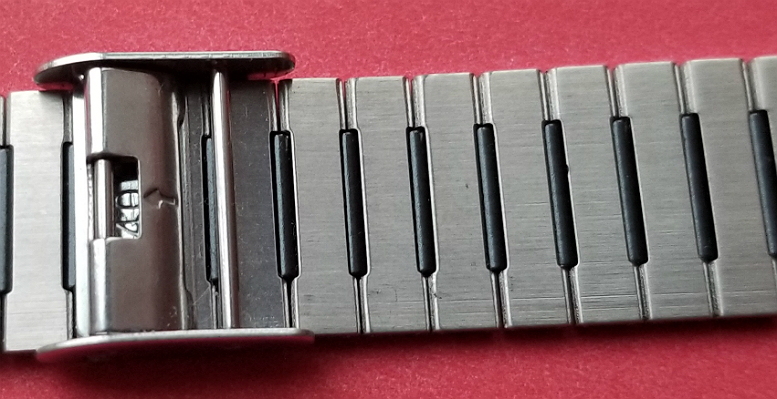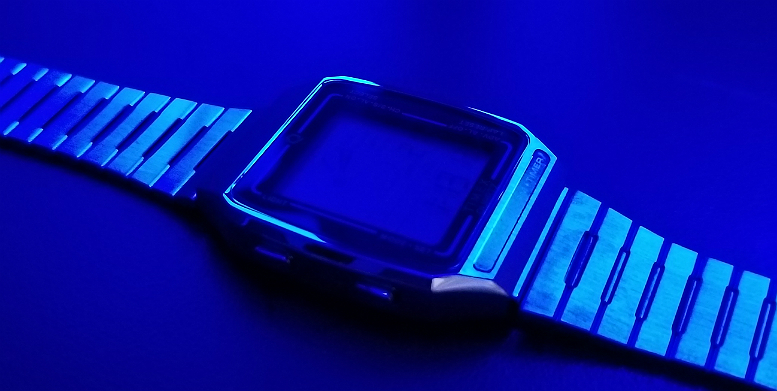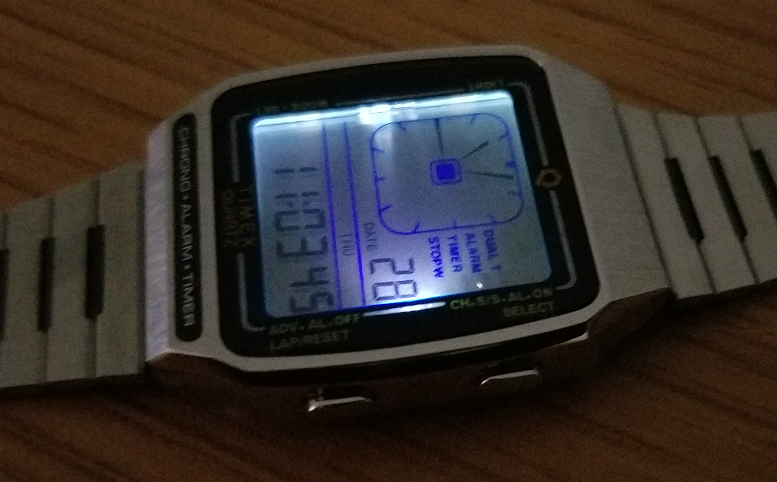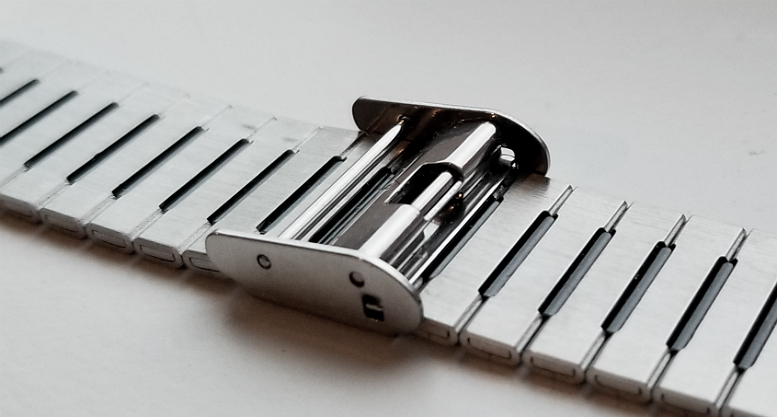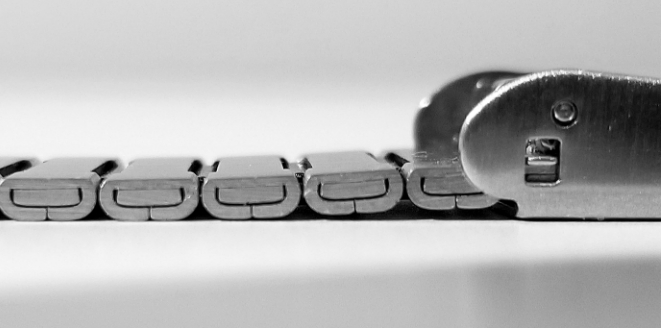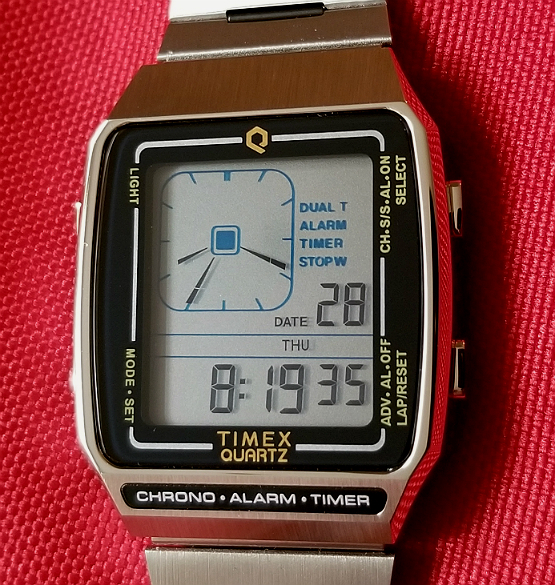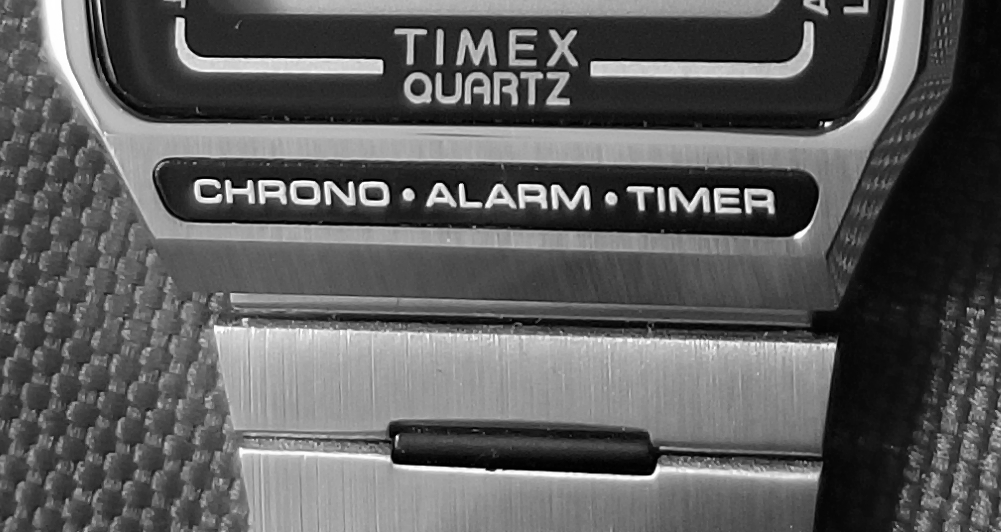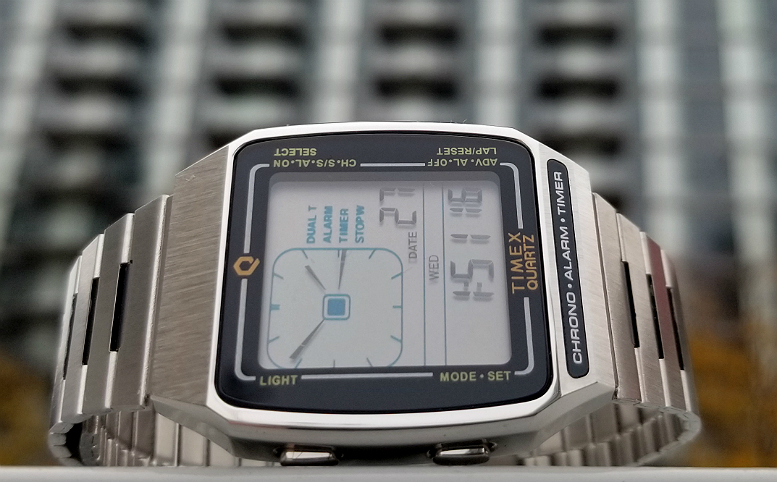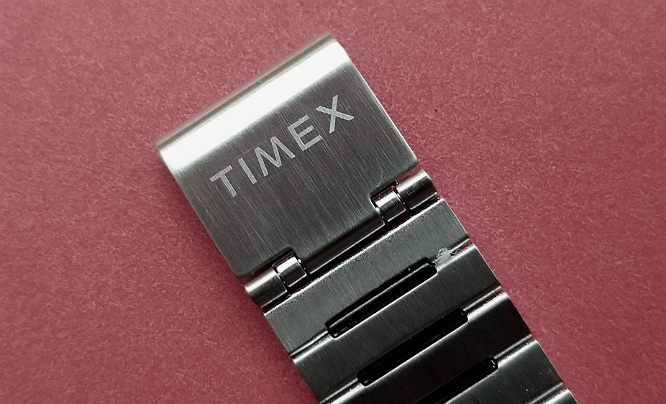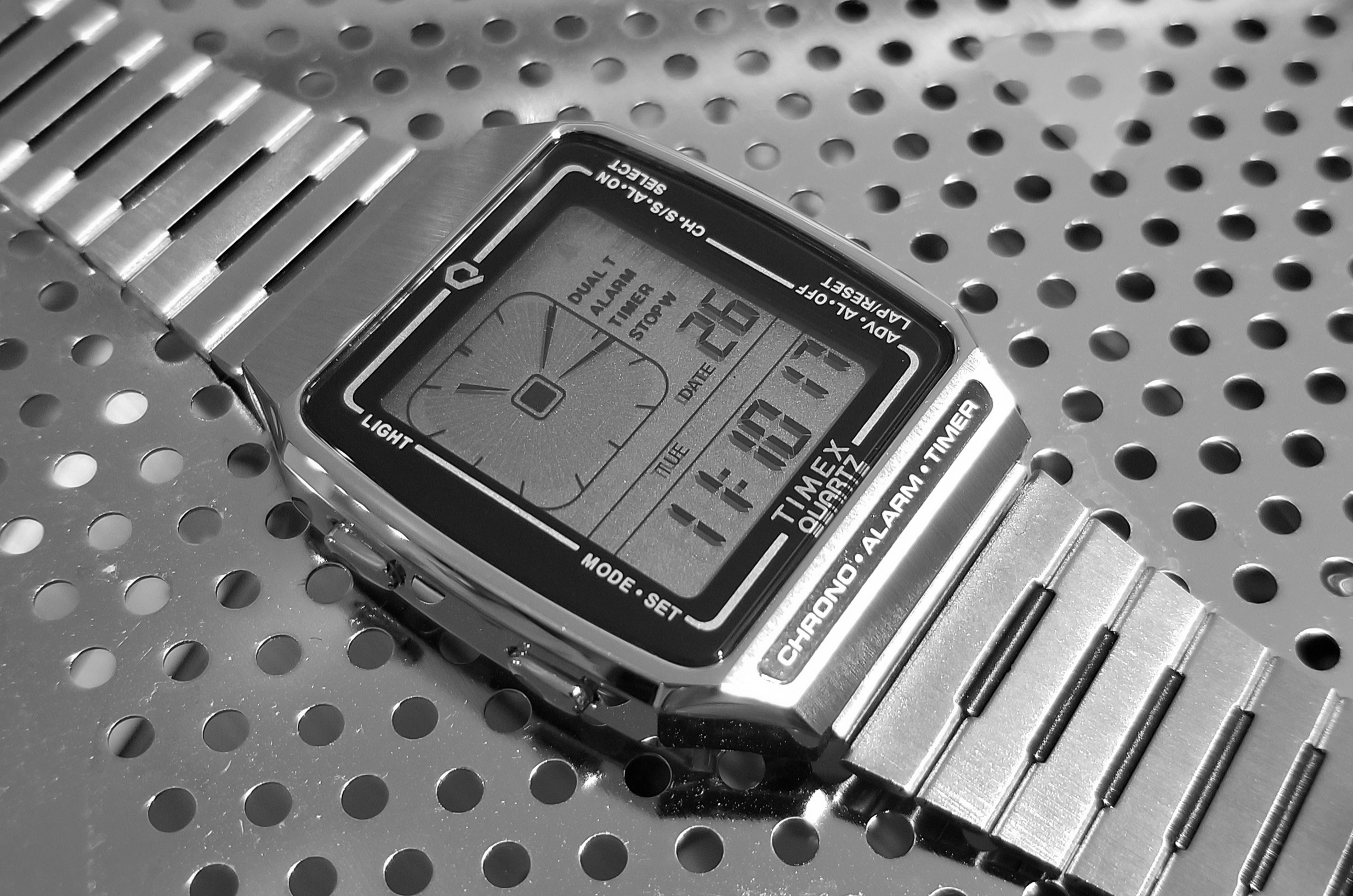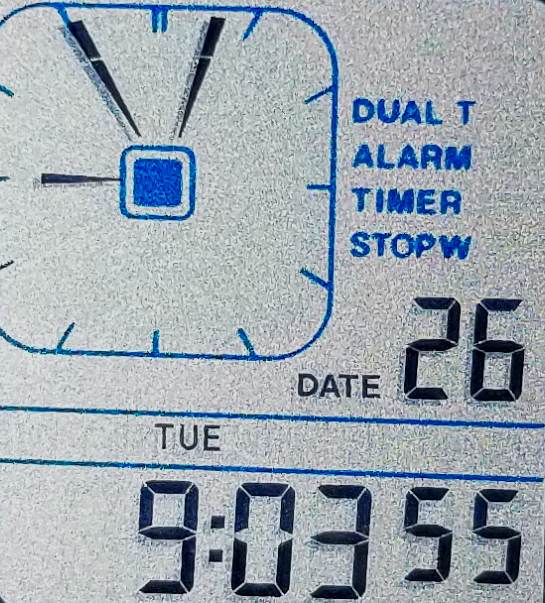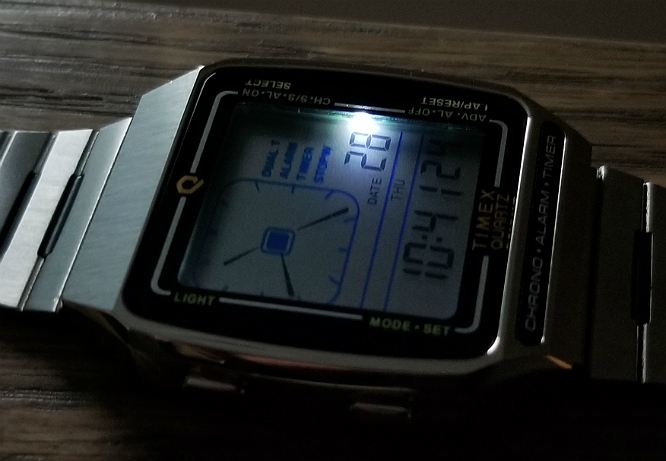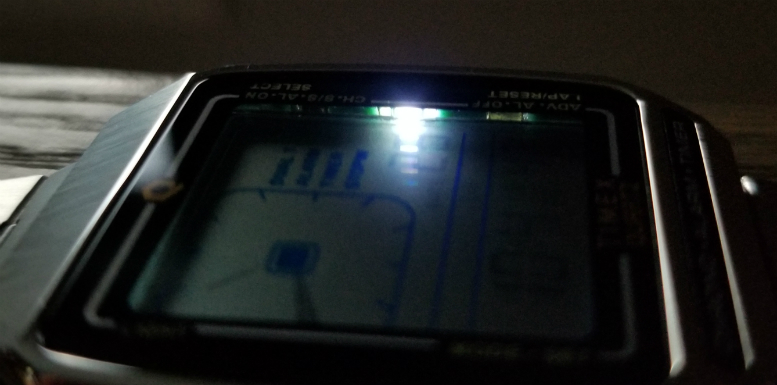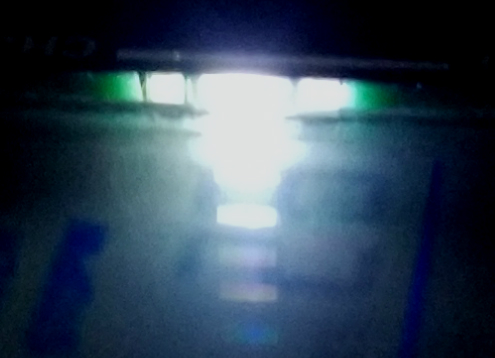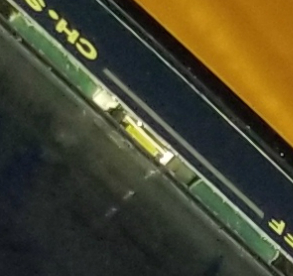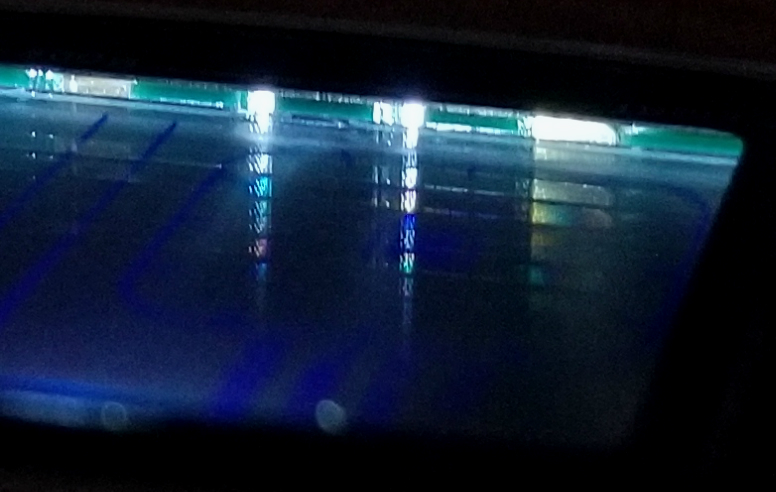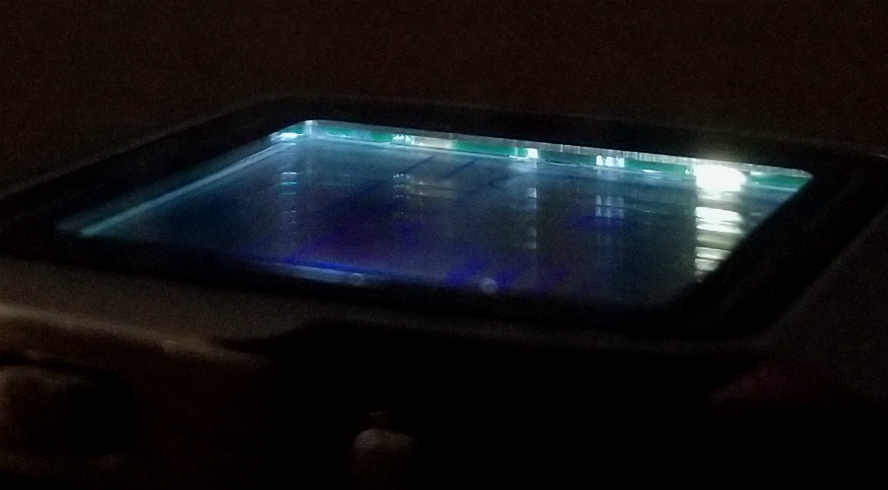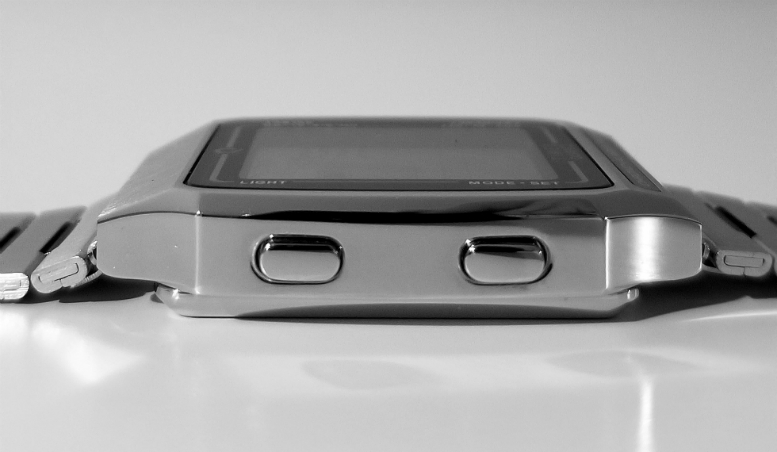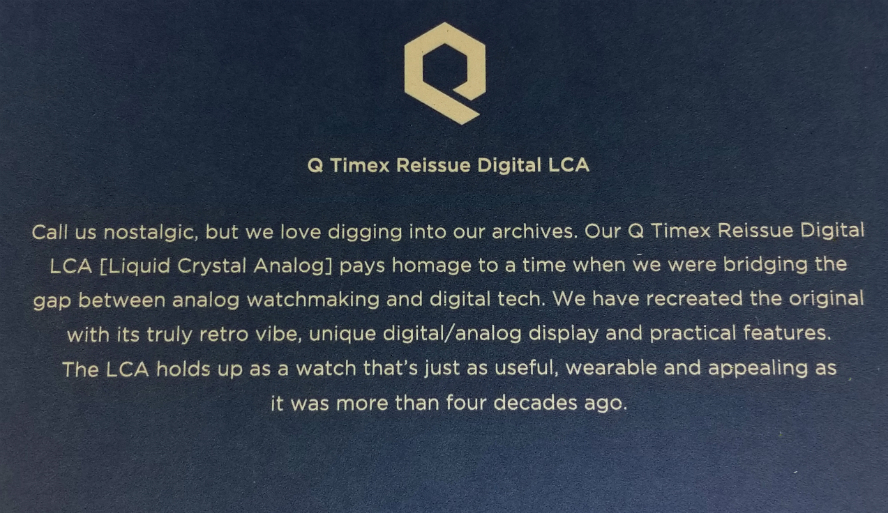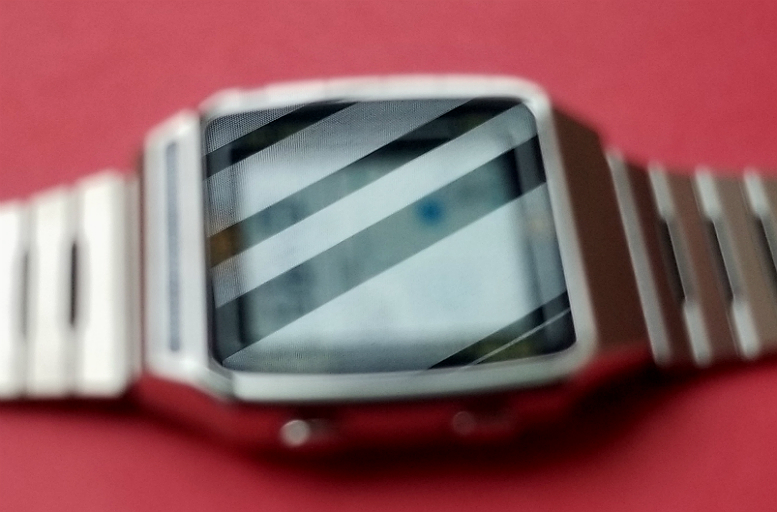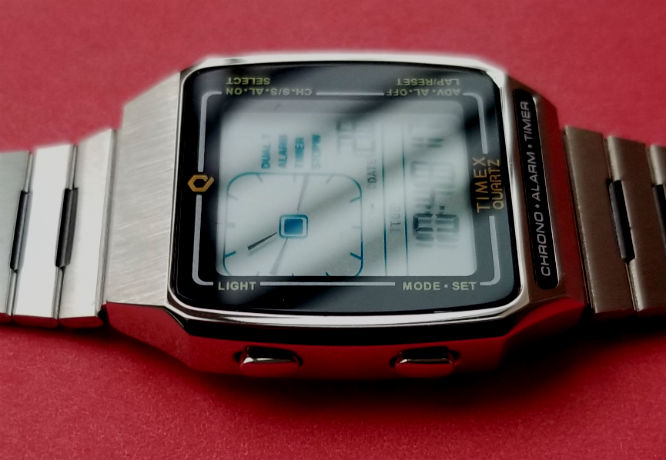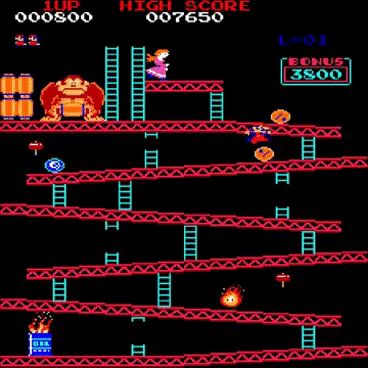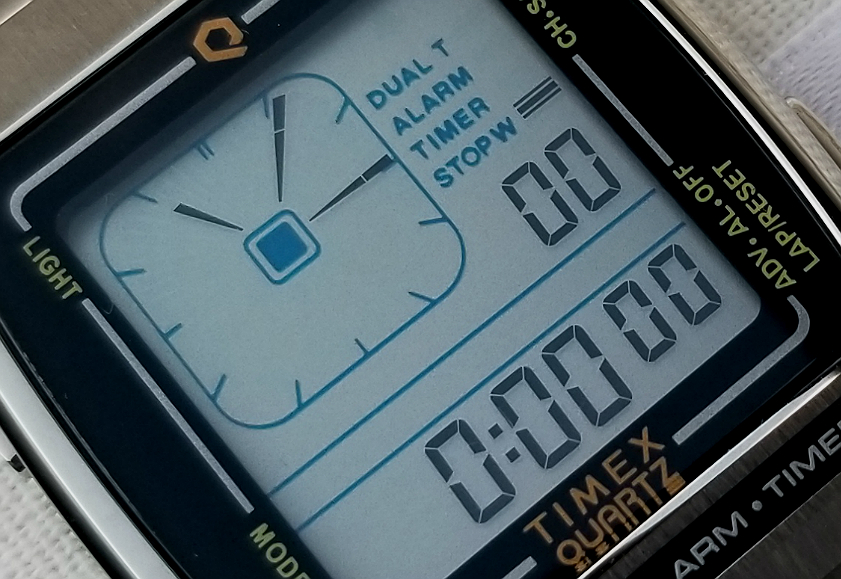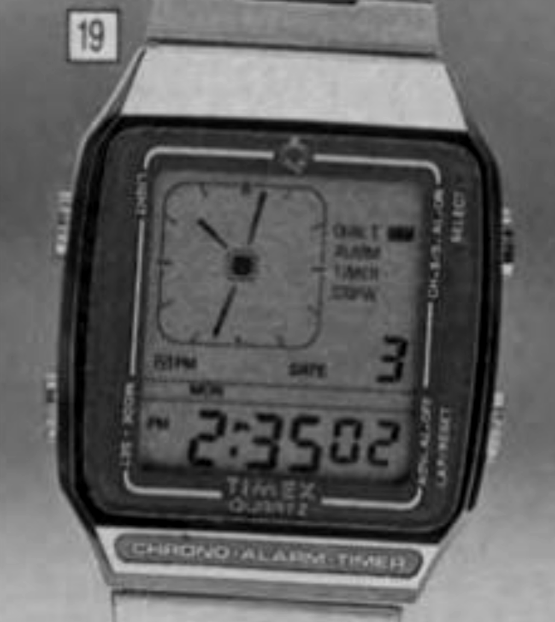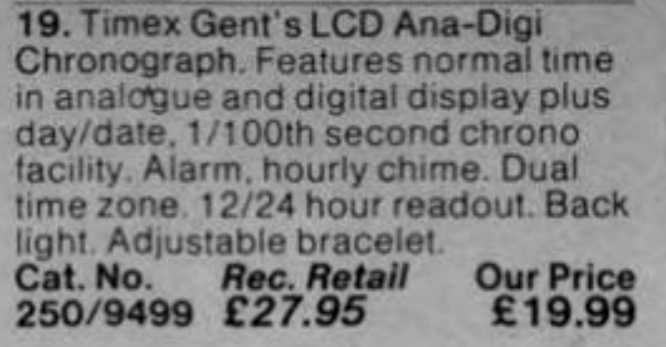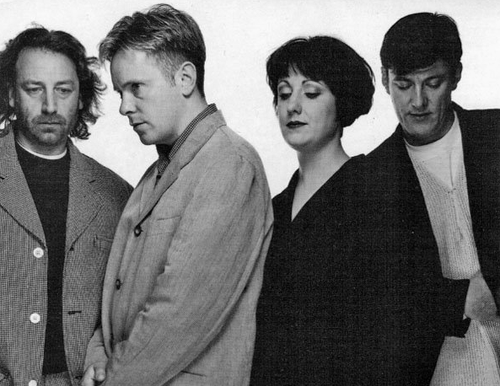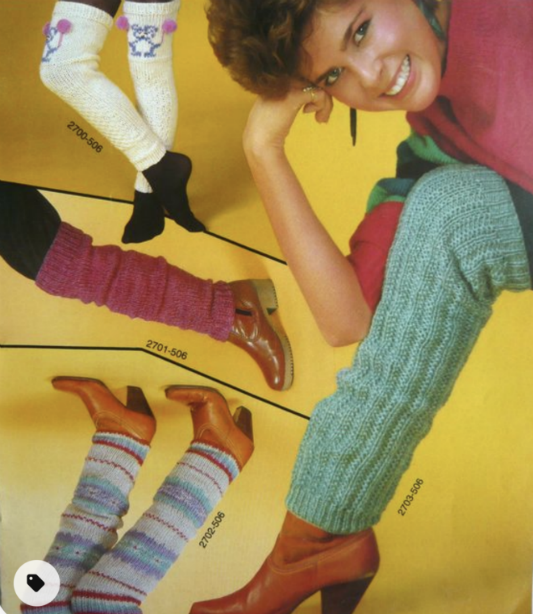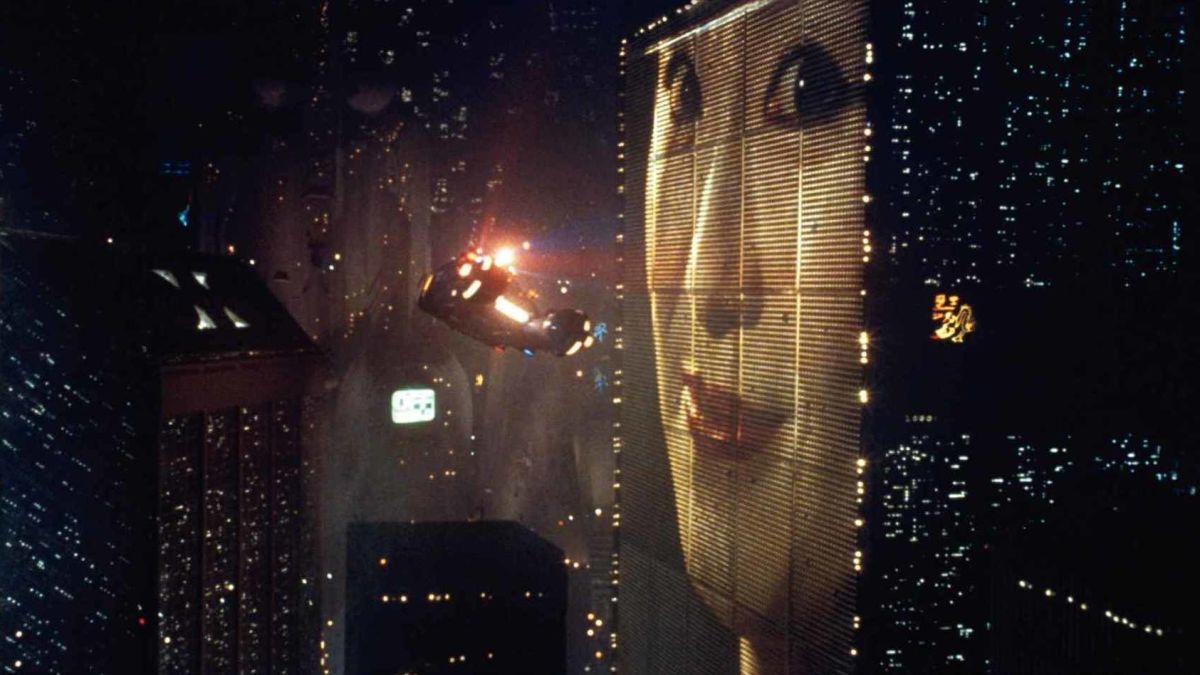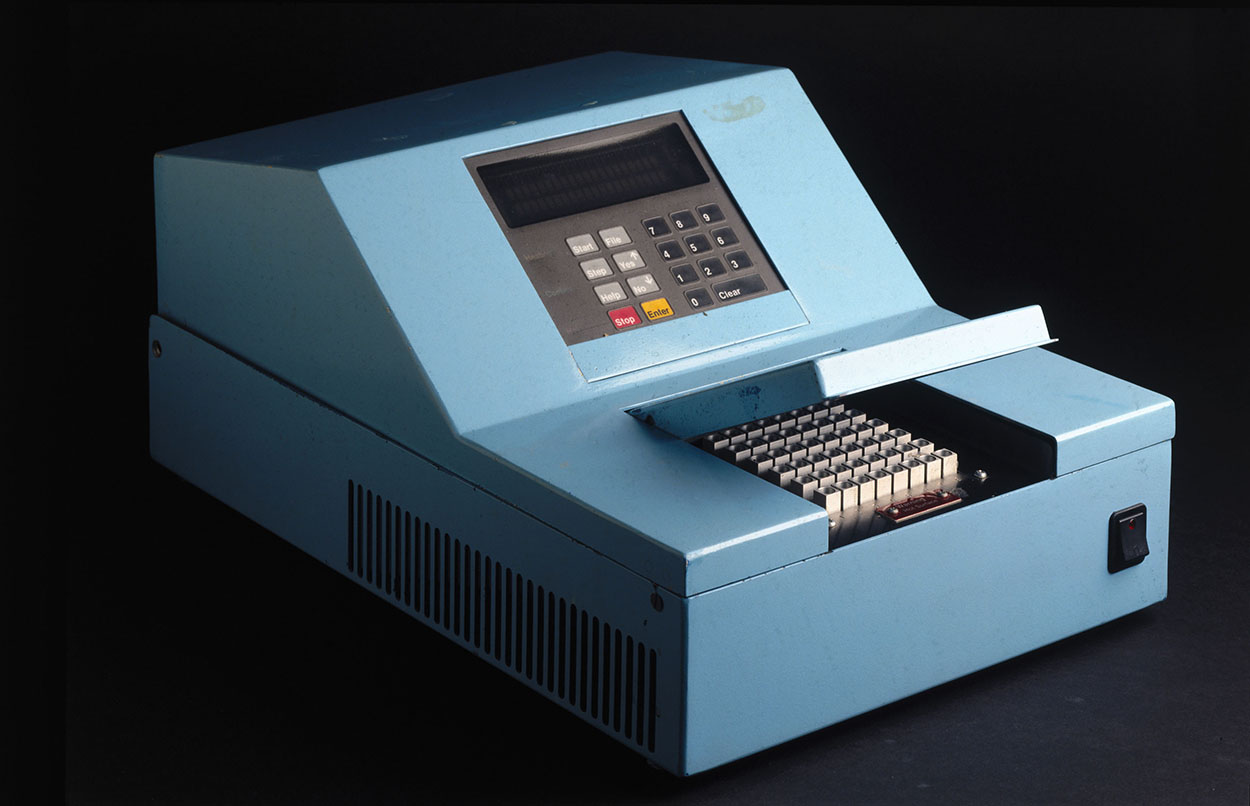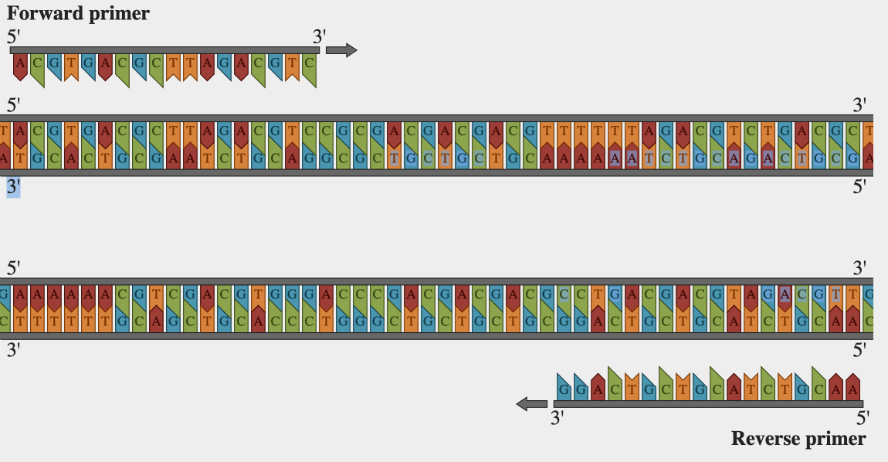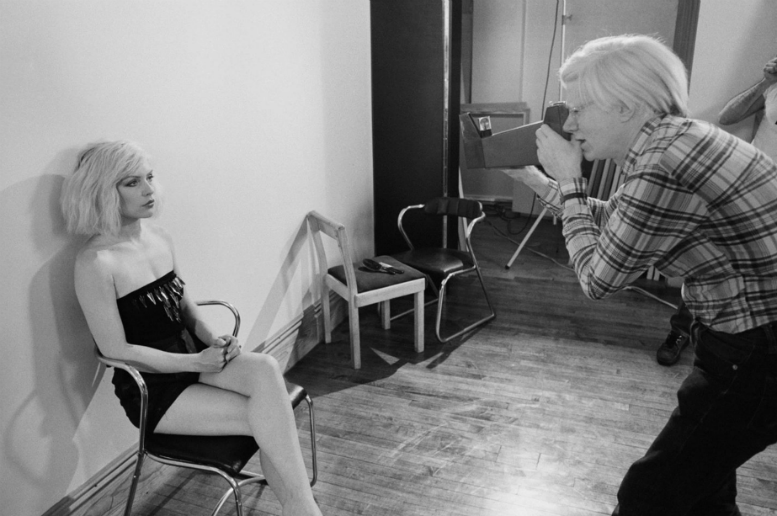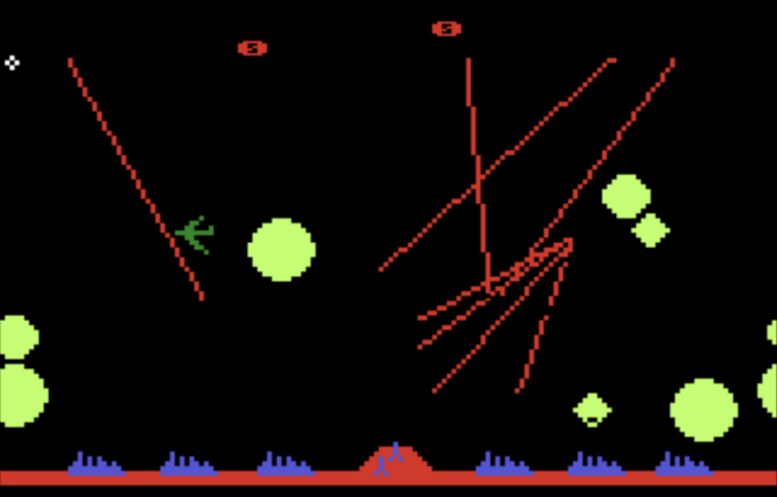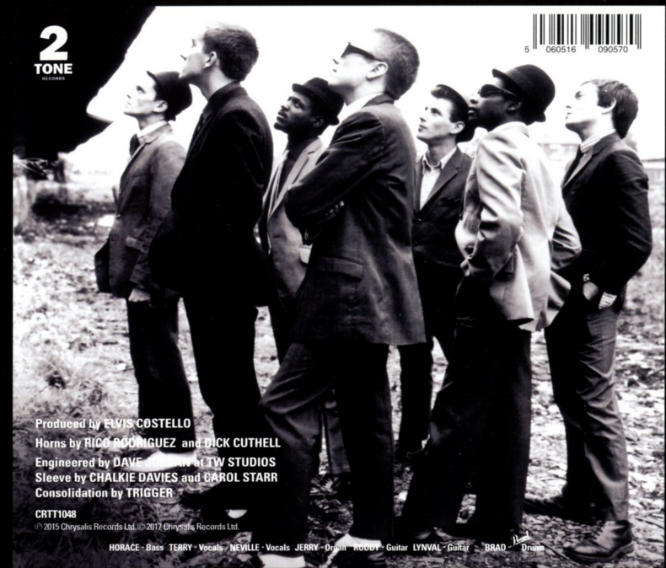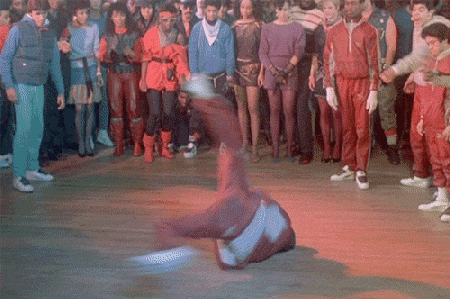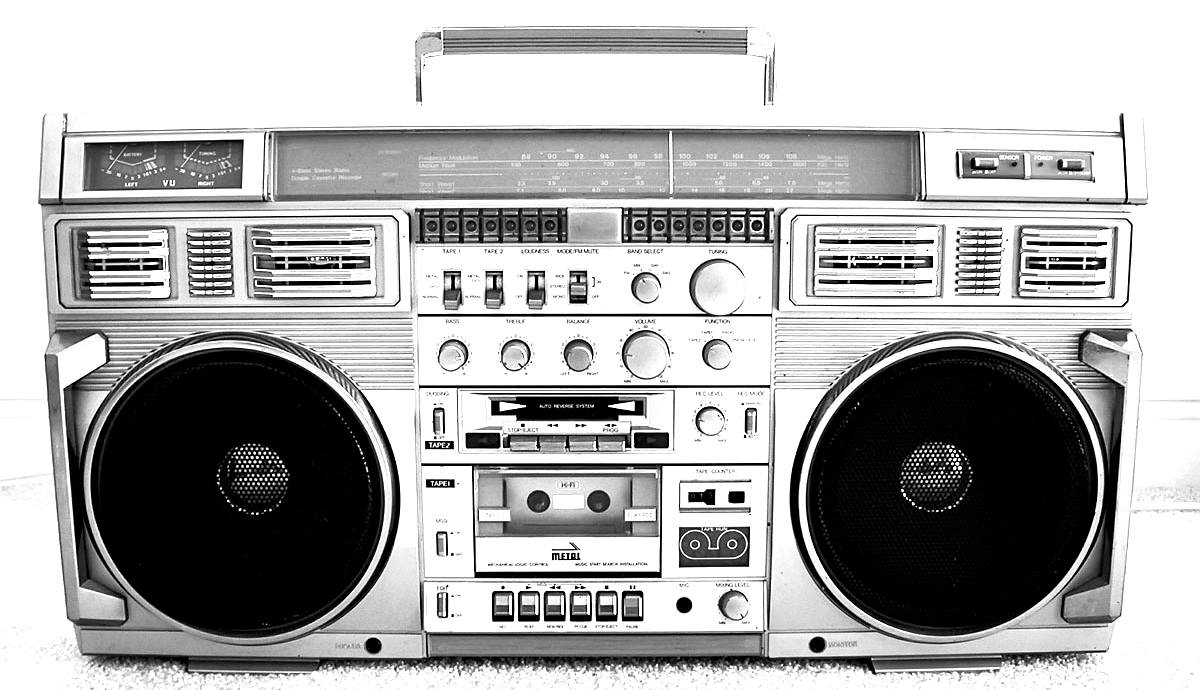Q Timex Reissue Digital LCA, Fall 2020.
Hi. This is Alan. Thank you for reading, and for your interest in these pages. My contact information is at the bottom of the page.
Here is a cool, and pleasantly quirky new watch from Timex. It is a reissue of a 1980s Timex that has a kind of "hybrid" display. In addition to having all the features of a typical LCD watch of its day (chrono, lap timers, alarm, etc) it features an analog clock in the LCD frame.
Like all of the "true reissues" from Timex, the LCA has been meticulously designed true to the original version, with minimal "updates" or style variations. The case is steel, an upgrade from the plated original case, and the light is a single LED diode, giving better light than the original yellowish incandescent bulb. More info and detailed pics of the light, below.
The watch features time display in digital and analog, with the analog clock in the left upper. The second hand ticks along with the change in the digital seconds. It can function as a dual-time watch, chronograph, and lap-timer. There is alarm function, and typical day/date. Water resistant to 30 m.
WHAT?
(This was pretty fun.) The watch came in a huge UPS box. I thought this must be some kind of mistake, maybe I was sent the wrong item. Inside, there was a Timex box, pictured below, large enough to hold cowboy boots. Inside, in addition to the watch box, was all this retro 1980s candy, including some I've almost forgotten about. There was also a mini Rubik's cube! Timex, it seems, really wanted to capture some of the zeitgeist of the 1980s with this reissue, and it also shows a good sense of humor. Totally unexpected, and quite fun.
(My watch is steel color, but you can see from the box it also comes in goldtone.)
Out of the box, before I pushed any of the buttons.
Bracelet with brushed stainless steel links, tapering away from the 20 mm lug width. Notice the black "inserts" between the links, true to the original model.
The closing mechanism features an adjustable clasp. By pulling up carefully on the rectangular "window" to the left, the clasp is released and can slide to the correct position, where it is locked again. The bar to the right is where the other component of the mechanism latches on.
Here is a really nice archival find, by Knut, showing the original 1980s watch from a French catalog. Model 617.17 (I've also seen it written as 61717). It retailed for 315 Francs. "Dual display, ten functions, adjustable metal bracelet." You can see that this watch appears virtually identical to the 2020 reissue.
Just an "artsy" shot, taken at work. (I work in a dark environment at computer workstations, where relative darkness is required in order to perceive things on the screen that may not be perceived if there was a lot of ambient background lighting. I believe the blue background light meant to prevent people from getting depressed.)
Much has been written about the light! Timex could have used their Indiglo technology to create a uniform and much brighter backlit appearance, but stayed true to the original, and used a single bulb. In the above pic, taken just after depressing the left upper button, the light arises from the right lateral side of the watch, and then diffuses across the dial. It does generally light up the right side of the watch better than the left side, a kind of idiosyncratic "feature not a bug" quality to the light system.
Double click here to add text.
Here's a look at the bracelet from the side, showing the folded metal links.
CHRONO ALARM TIMER is written along the bottom of the case. I thought it was some kind of paint stamped on, but it seems to be an inlay of some kind, into a slot created in the case.
The. steel case has areas that are polished and shiny, and others that are brushed.
Liquid crystal is pretty cool, here's as good a pic I can get of the stuff behind the glass.
"Liquid crystals (LCs) are a state of matter which has properties between those of conventional liquids and those of solid crystals. For instance, a liquid crystal may flow like a liquid, but its molecules may be oriented in a crystal-like way." (Wikipedia).
"A liquid crystal display consists of a kind of sandwich – there's a transparent front, with the liquid crystal panel underneath, and a reflective surface behind. The liquid crystals change their orientation when current's applied, which alters their transparency." (Hodinkee).
Let's get back to the light. Once again, you can see that the white LED light comes from the mid-portion of the right side of the watch.
The appearance to your own eye will vary, and may be different to how a camera displays it in a photo, and will depend on ambient light, and your degree of pupillary dilation at the time you activate the light, and probably other factors. I would imagine that dial illumination, as perceived by a human, would be greatest when you have been in the dark for a while, such that dark accommodation would result in dilated pupils, and optimized light sensitivity.
Here, I toned down the camera settings to reduce the light intensity, and you can actually see the light emitting diode. It is the bright rectangle in the center. Those other bright areas on either side of the diode are not active lights, but light that has interacted with the crystal and have reflected back against the inner edge of the case. There is just one diode. Below is just a closeup of that.
Here, you can see in the very center of the image, a light yellowish-green rectangle. This is the diode. It is not being activated at this time. This photo was very difficult to obtain, and required a bright light shining on the inner edge of the watch, good focus and awkward phone angle and space limitation, but the Samsung Galaxy did it.
The above pic, and a few similar below, are not what you'd ever see in routine use of this watch, but when I was taking pics of the LED, I noticed that on the side opposite side light, there were all these reflections, in various colors. My thoughts are that these are resulting from interplay between the incident light against the metal edge of the case and the glass, reflecting back and forth, creating these arrays of tiny colored light. The effect was pretty cool.
Oval pushers are good, matching the polished steel of the side of the case.
On the inside of the box.
Above and below pics are unusual, but they are real pictures. Noticed as I was trying to grab some pics, the phone camera's focus suddenly locked down on a reflection of balcony bars out my window, showing the reflective nature of the perfectly flat glass. Below is when the focus locked down on the watch dial, but with the balcony bars out of focus.
THIS WAS THE 1980s
Above and below, 1983 Argos catalog. Sold through Argos at a discount, £19.99, eight quid off the standard price, that was quite a savings in 1983.
The Q Timex Reissue Digital LCA is a faithfully-reproduced reissue with a couple of quality updates, but otherwise identical to the 1980s original. It adds to the list of watches that Timex has brought back from their catalogs, and resurrected for the 21st century. Keep them coming, Timex!
Thank for reading. I hope you will like it.
Contact
Website: Alan's Vintage Watches
What else happened in the 1980s?! Take a look at a few, below. In no particular order of chronology, significance, etc, and not in any way representative of the entire or even a tiny part of the 1980s, etc, in fact the page maxed out of space, sadly, while I still had tons of images to load.
